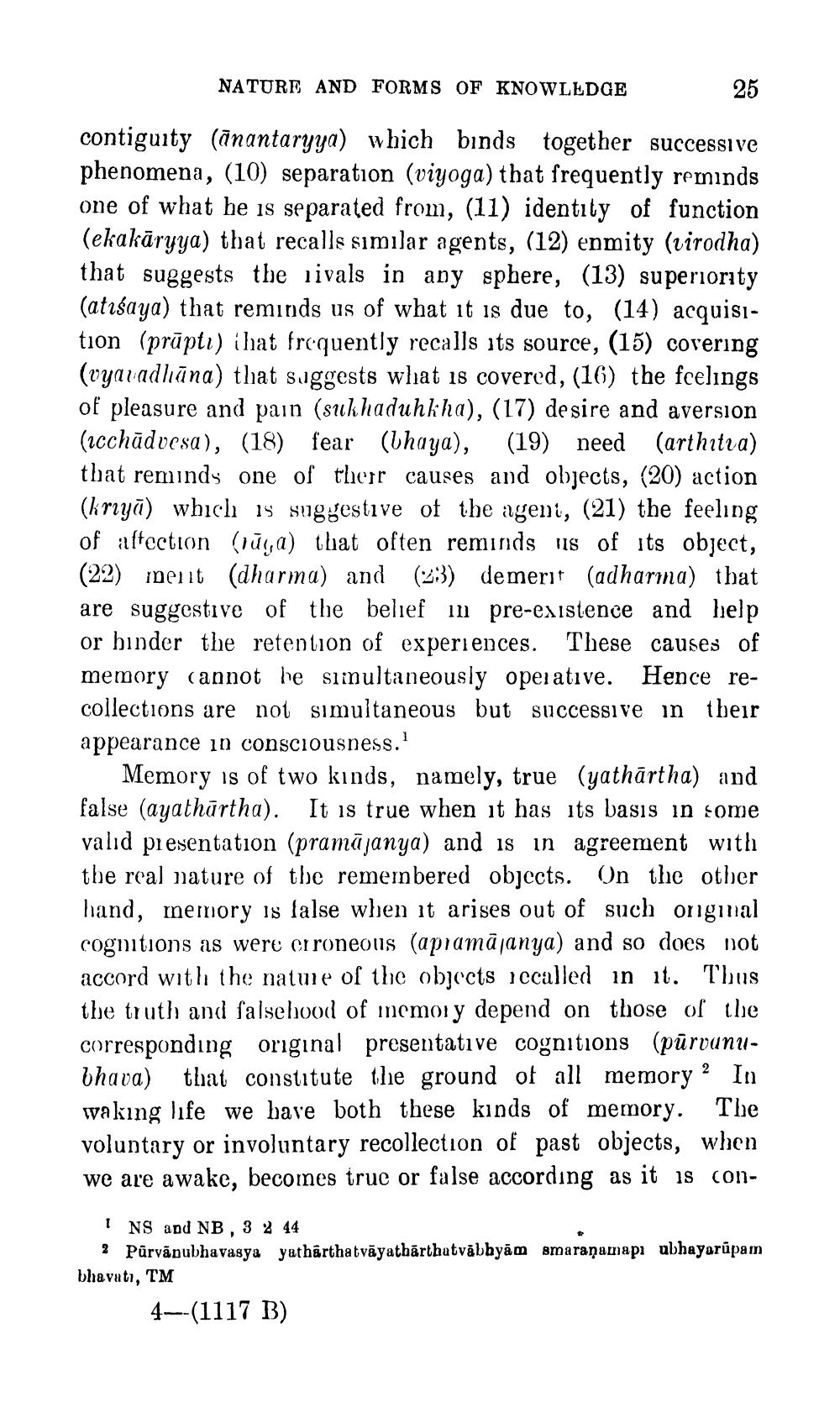________________ NATURE AND FORMS OF KNOWLEDGE 25 contiguity (anantaryya) which binds together successive phenomena, (10) separation (viyoga) that frequently reminds one of what he is separated from, (11) identity of function (ekakaryya) that recalls similar agents, (12) enmity (virodha) that suggests the rivals in any sphere, (13) superiority (atisaya) that reminds us of what it is due to, (14) acquisition (prupti) ihat frequently recalls its source, (15) covering (vyavadhana) that suggests what is covered, (16) the feelings of pleasure and pain (sukhaduhkha), (17) desire and aversion (acchudvesa), (18) fear (Chaya), (19) need (arthitva) that reminds one of their causes and objects, (20) action (kriya) which is suggestive of the ageni, (21) the feeling of affection (ruga) that often reminds is of its object, (22) ment (dharma) and (233) demerit (adharia) that are suggestive of the belief in pre-existence and help or binder the retention of experiences. These causes of memory cannot be simultaneously operative. Hence recollections are not simultaneous but successive in their appearance in consciousness. Memory is of two kinds, namely, true (yathartha) and false (ayathartha). It is true when it has its basis in some valid presentation (pramajanya) and is in agreement with the real nature of the remembered objects. On the other hand, memory is false when it arises out of such ongmal cognitions as were erroneous (apramajanya) and so does not accord with the natue of the objects iccalled in it. Thus the truth and falsehood of memory depend on those of the corresponding original presentative cognitions (purvunubhava) that constitute the ground of all memory 2 In waking life we have both these kinds of memory. The voluntary or involuntary recollection of past objects, when we are awake, becomes true or false according as it is con INS and NB, 3 2 44 2 Purvanubhavasya yatharthatvayatharthatvabbyam smaranamapi ubhayarupam bhavati, TM 4- (1117 B)




